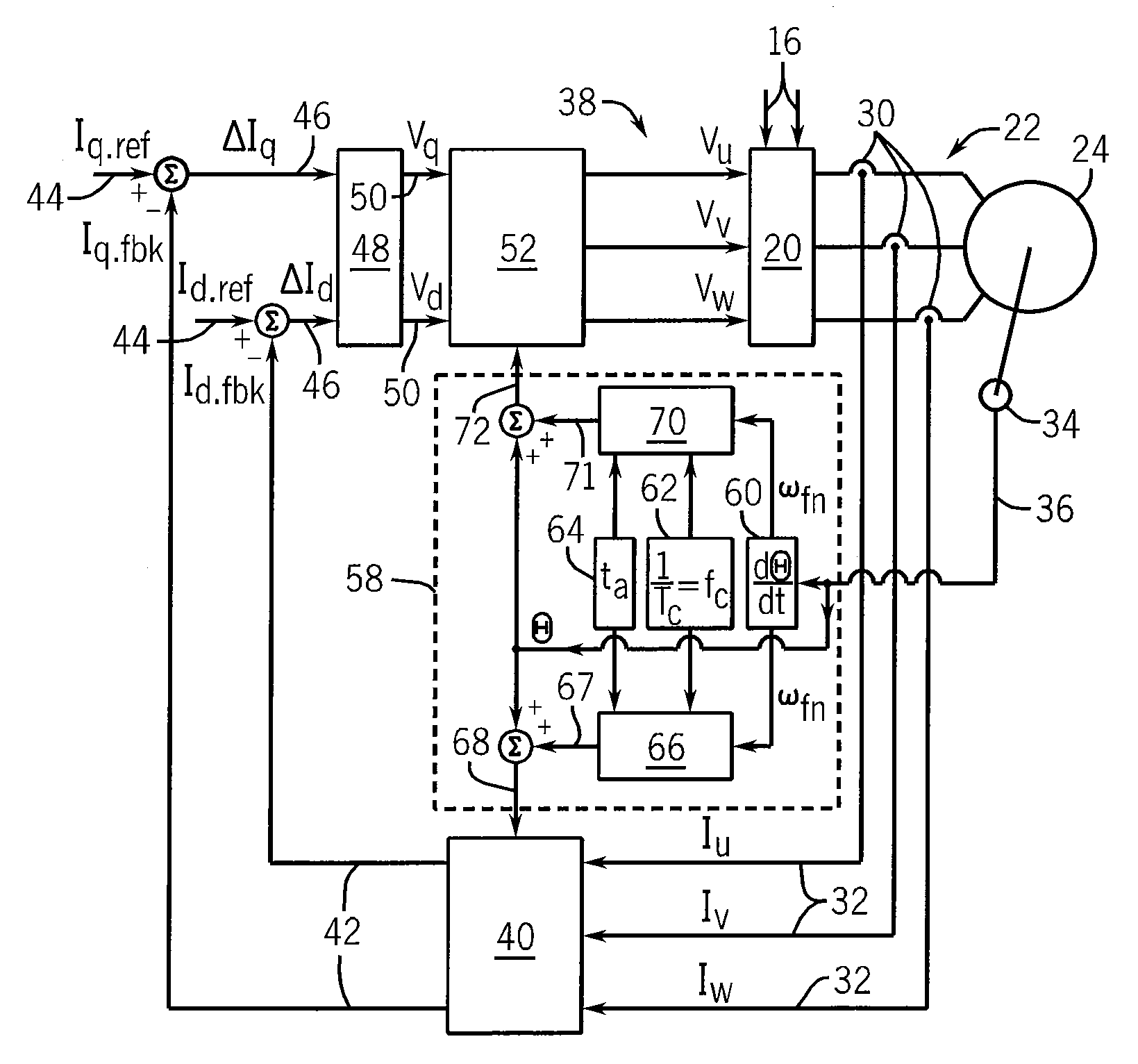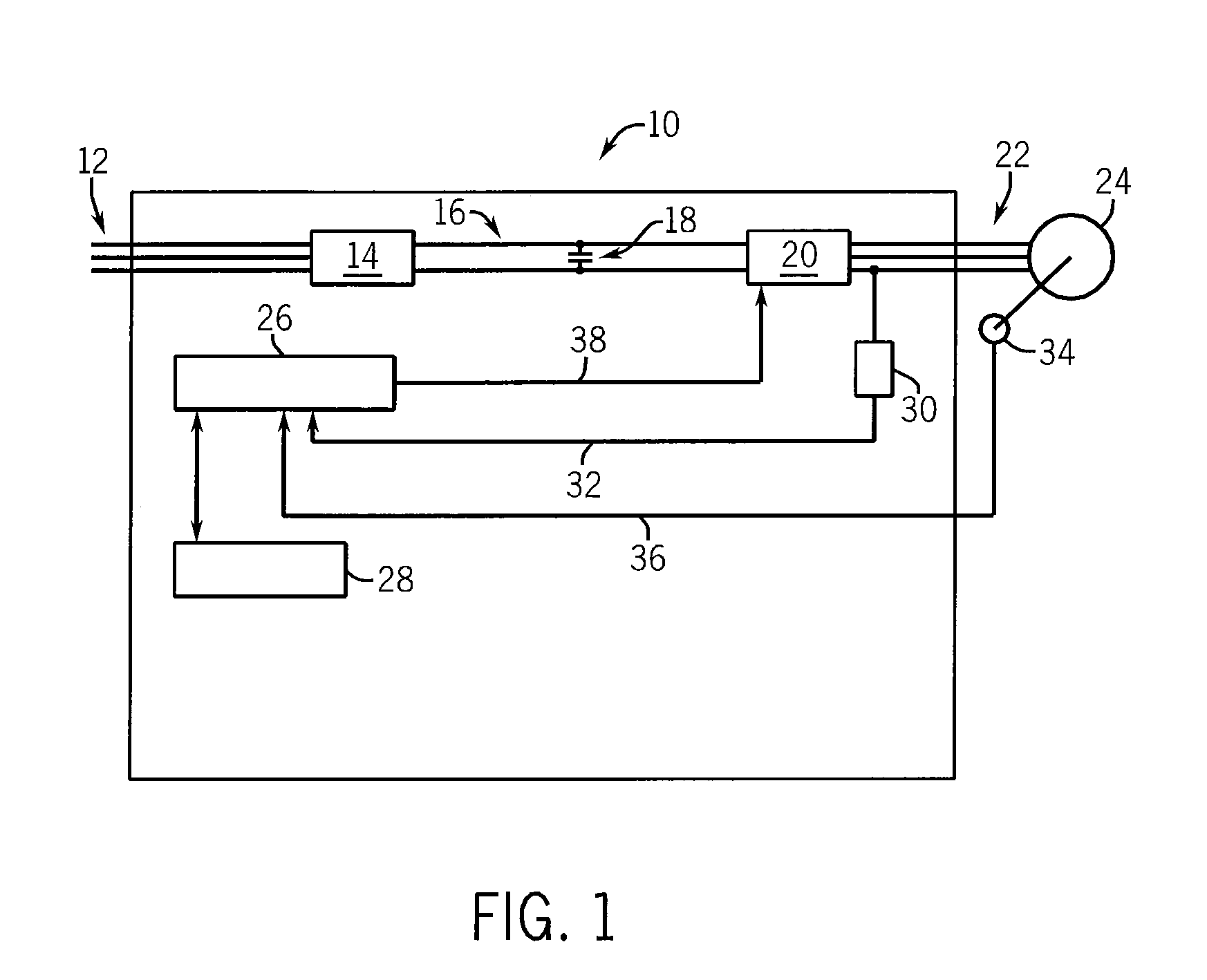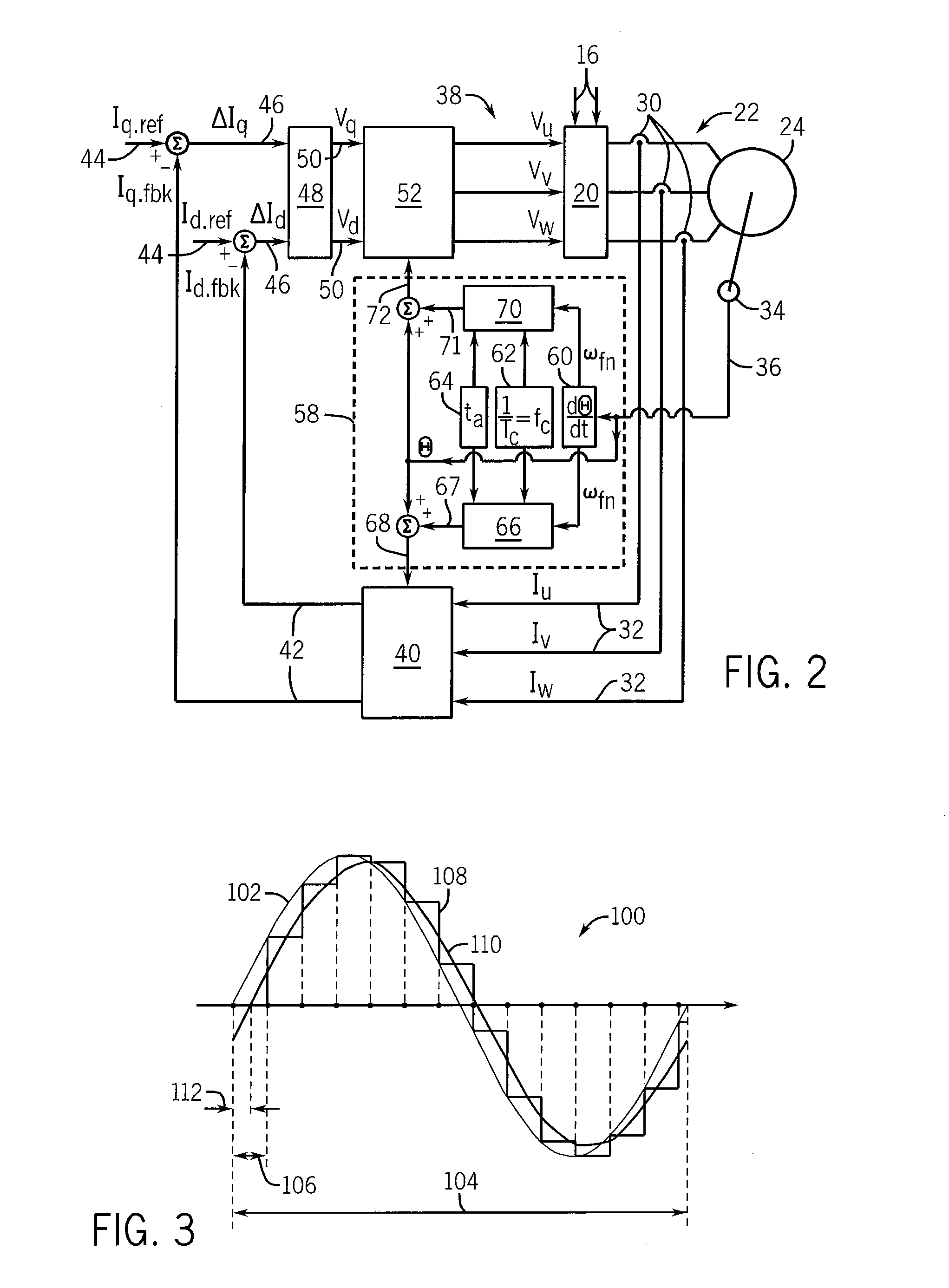Method and Apparatus for Increased Current Stability in a PWM Drive
a technology of current stability and pwm, which is applied in the direction of motor/generator/converter stopper, pulse technique, dynamo-electric converter control, etc., can solve the problems of loss of control of the motor, loss of motor control, and digital nature of the motor drive, and may present further challenges for providing high-performance motor control
- Summary
- Abstract
- Description
- Claims
- Application Information
AI Technical Summary
Benefits of technology
Problems solved by technology
Method used
Image
Examples
Embodiment Construction
[0029]Referring now to FIG. 1, a motor drive 10 generally includes an input power source 12, such as a three-phase alternating current (AC) source. Alternately, the input power 12 could be a single-phase AC or direct current (DC) source. A preferred topology for the motor drive includes an input power source 12 connected to a rectifier section 14. The rectifier section 14 may be either active or passive, as is known in the art. The rectifier section 14 converts the input power 12 to a suitable DC voltage and supplies it to the DC bus 16. A DC bus capacitor 18 is connected between the positive and negative rails of the DC bus 16 to help maintain a substantially constant DC voltage level on the DC bus 16. The DC bus 16 is connected to an inverter section 20 which converts the DC bus voltage to an output voltage 22 suitable for use by the motor 24 connected to the motor drive 10.
[0030]Alternately, any suitable topology for a motor drive 10, including but not limited to a matrix convert...
PUM
 Login to View More
Login to View More Abstract
Description
Claims
Application Information
 Login to View More
Login to View More - R&D
- Intellectual Property
- Life Sciences
- Materials
- Tech Scout
- Unparalleled Data Quality
- Higher Quality Content
- 60% Fewer Hallucinations
Browse by: Latest US Patents, China's latest patents, Technical Efficacy Thesaurus, Application Domain, Technology Topic, Popular Technical Reports.
© 2025 PatSnap. All rights reserved.Legal|Privacy policy|Modern Slavery Act Transparency Statement|Sitemap|About US| Contact US: help@patsnap.com



